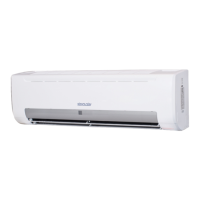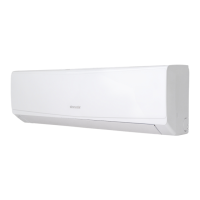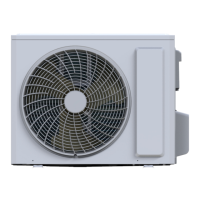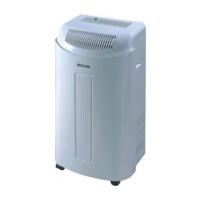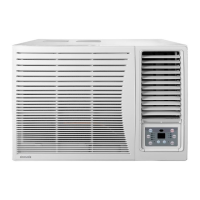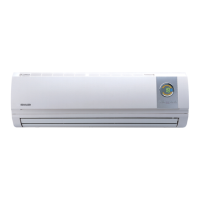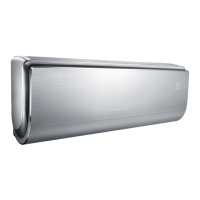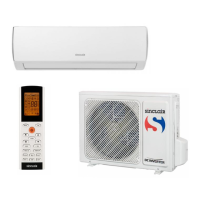13
Do not attempt to inspect or repair this unit yourself. Arrange for a qualified technician to carry out all servicing and
maintenance.
WARNING
7.2 Unit troubleshooting
Troubleshooting steps
- Close the doors and windows.
- Close shutters/blinds to shield the unit
from direct sunlight.
- Turn off some of the computers during
the hottest part of the day.
- Clean the filter.
Symptom
Possible causes
The unit does not start
Air flows normally but
doesn’t cool
The unit starts or stops
frequently
Low cooling effect
Low heating effect
- The unit is powered off.
- The power switch fuse may have
burned out.
- The remote controller’s batteries are
dead.
- The temperature setting is not correct.
- Doors or windows are open.
- Sunlight is shining directly onto the
unit.
- The room contains many heat sources
such as computers or refrigerators.
- The unit's air filter is dirty.
- The outside temperature is unusually
high.
- Wait for the power to come back on.
- Replace the fuse.
- Replace the batteries.
- Set the desired temperature on the
remote controller.
- Close doors and windows.
- Doors or windows are not completely
closed.
Table 7-1
Arrange for a professional technician to check the following:
- Too much or too little refrigerant.
- No gas in the refrigerant circuit.
- The outdoor unit compressors have malfunctioned.
- The power supply voltage is too high or too low.
- There is a blockage in the piping system.
Engage a professional air conditioning engineer to check the following:
- The unit's heat exchanger is dirty.
- The unit's air inlet or outlet is blocked.
- A refrigerant leak has occurred.
Arrange for a professional technician to check the following:
- A refrigerant leak has occurred.
- Power on the unit. This indoor unit
forms part of an air conditioning system
that has multiple indoor units that are all
connected. The indoor units cannot be
powered on individually - they are all
connected to one, single power switch.
Ask a professional technician for advice
regarding how to safely power on the
units.
- The cooling capacity of the system
reduces as the outdoor temperature
rises and the system may not provide
sufficient cooling if the local climate
conditions are not considered when the
system's outdoor units were selected.
- A power cut has occurred (the power to
the premises has been cut-off).

